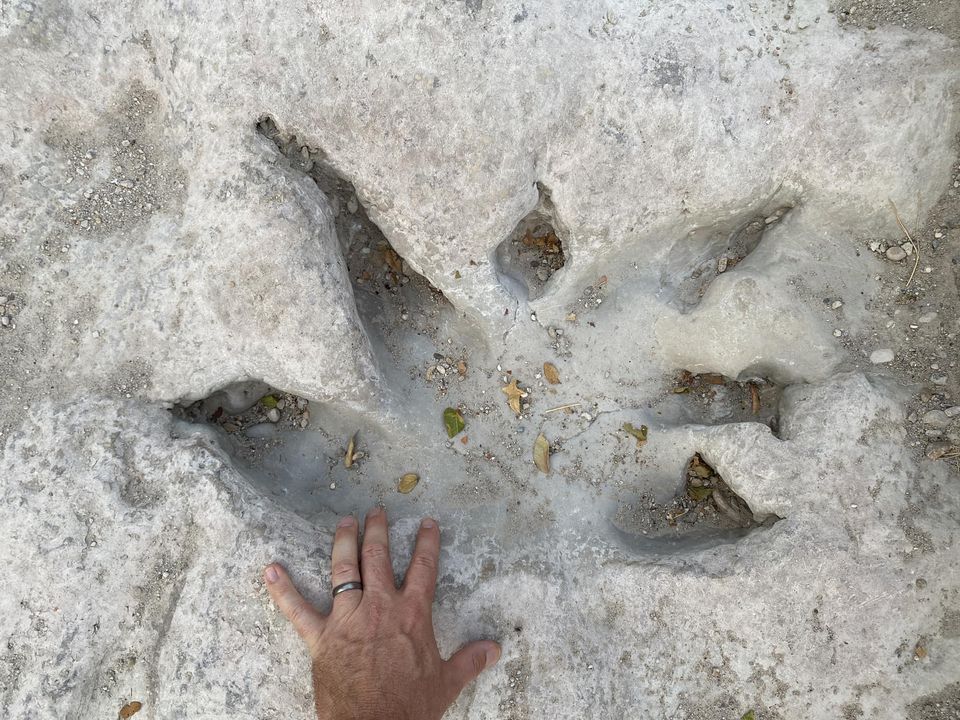
113-million-year-old dinosaur footprints were discovered in a dried-up part of a river at the Dinosaur Valley State Park in central Texas.
As the name suggests, the park already protects other dinosaur footprints. But the tracks that recently emerged are usually hidden under the mud, silt and waters of the Paluxy River.
This summer, however, water levels have dipped so low that the prehistoric indentations are now visible. So far, volunteers have counted 75 newly exposed footprints in the parched riverbed.
“It has been another very hot, very dry year, so our researchers are trying to take advantage of the drought,” says park superintendent Jeff Davis to the Dallas Morning News’ Sarah Bahari.
Footprints reveal types of dinosaurs discovered in Texas
Two different types of dinosaurs likely made the footprints, according to park officials. One was Acrocanthosaurus, a 15-foot-tall carnivore that weighed approximately 14,000 pounds.
As the gargantuan reptile walked around the area on two legs, it left behind the outline of its three-toed feet.
The other was Sauroposeidon proteles, which has been the official state dinosaur of Texas since 2009.
This long-necked behemoth may have measured up to 100 feet long and weighed closer to 88,000 pounds. It left behind larger, bulbous-shaped tracks that are similar to elephant footprints.
When both types of creatures were walking around the area during the Cretaceous Period, they would’ve been stepping on the squishy mud of a shallow sea.
Over time, however, that sediment solidified into limestone, which preserved the imprints for millennia. The sediment and water of the Paluxy River continue to protect the tracks, but eventually, they will erode away.
“Texas is blessed with a lot of good fossil occurrences,” as James Farlow, a paleontologist at Purdue University Fort Wayne, told the New York Times last year. “It’s a resource that is continually being destroyed but continuously being renewed.”
Five main track site areas have been mapped within Dinosaur Valley State Park. Each of these areas has named individual track sites.
Two types of tracks are visible at these sites:
Sauropod tracks, large elephant-like tracks believed to have been made by Sauroposeidon proteles.
Theropod tracks, smaller and often with a distinct three-toed pattern, believed to have been made by Acrocanthosaurus. Some of the theropod tracks are classified as “elongated” because the dinosaur was walking on its metatarsal bones.
Many of these tracks do not show the typical three-toe pattern because the tracks were made in runny, deep mud, and the toe impressions were buried.
Watch the video of the dinosaur track mapping project.
See all the latest news from Greece and the world at Greekreporter.com. Contact our newsroom to report an update or send your story, photos and videos. Follow GR on Google News and subscribe here to our daily email!



